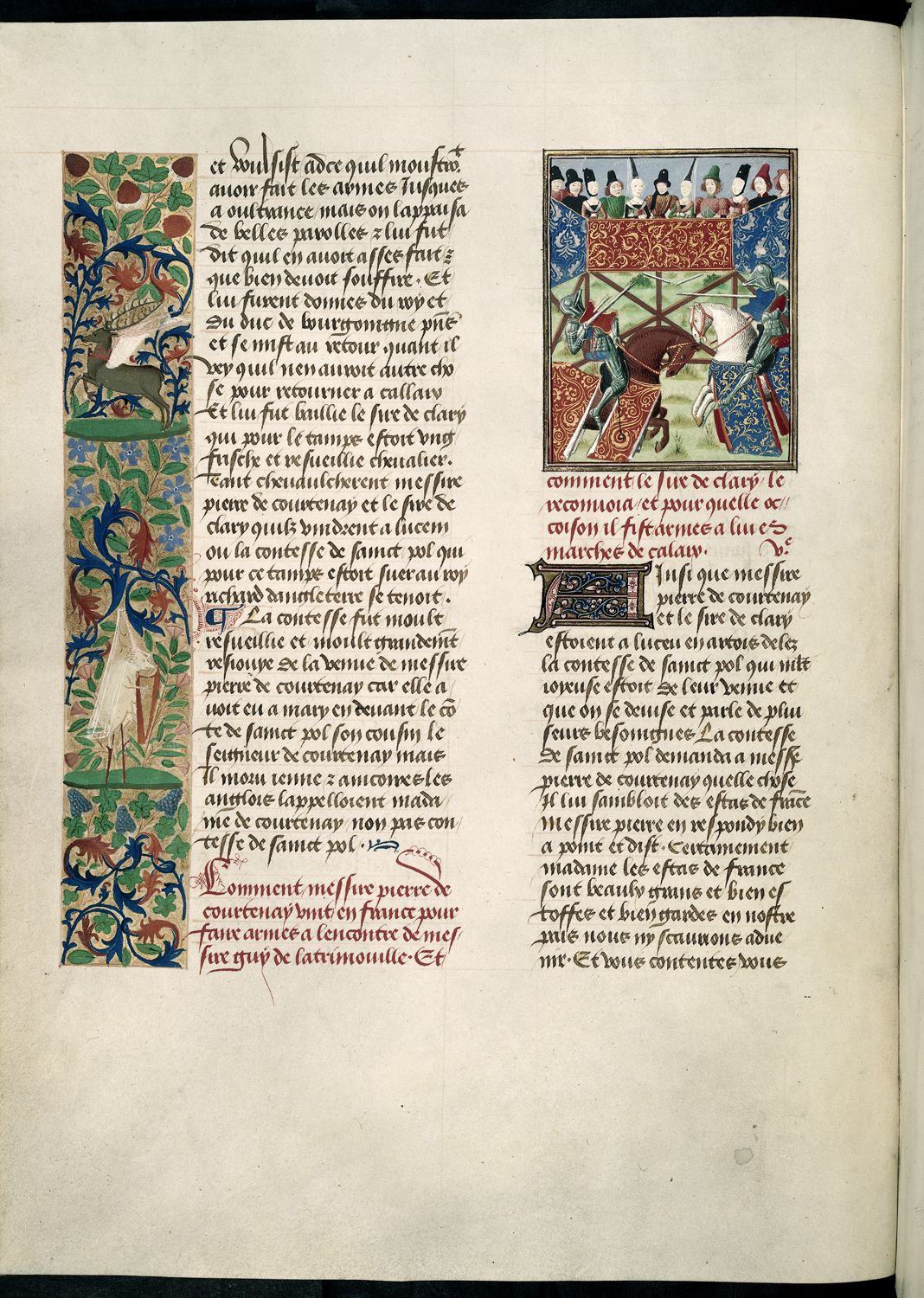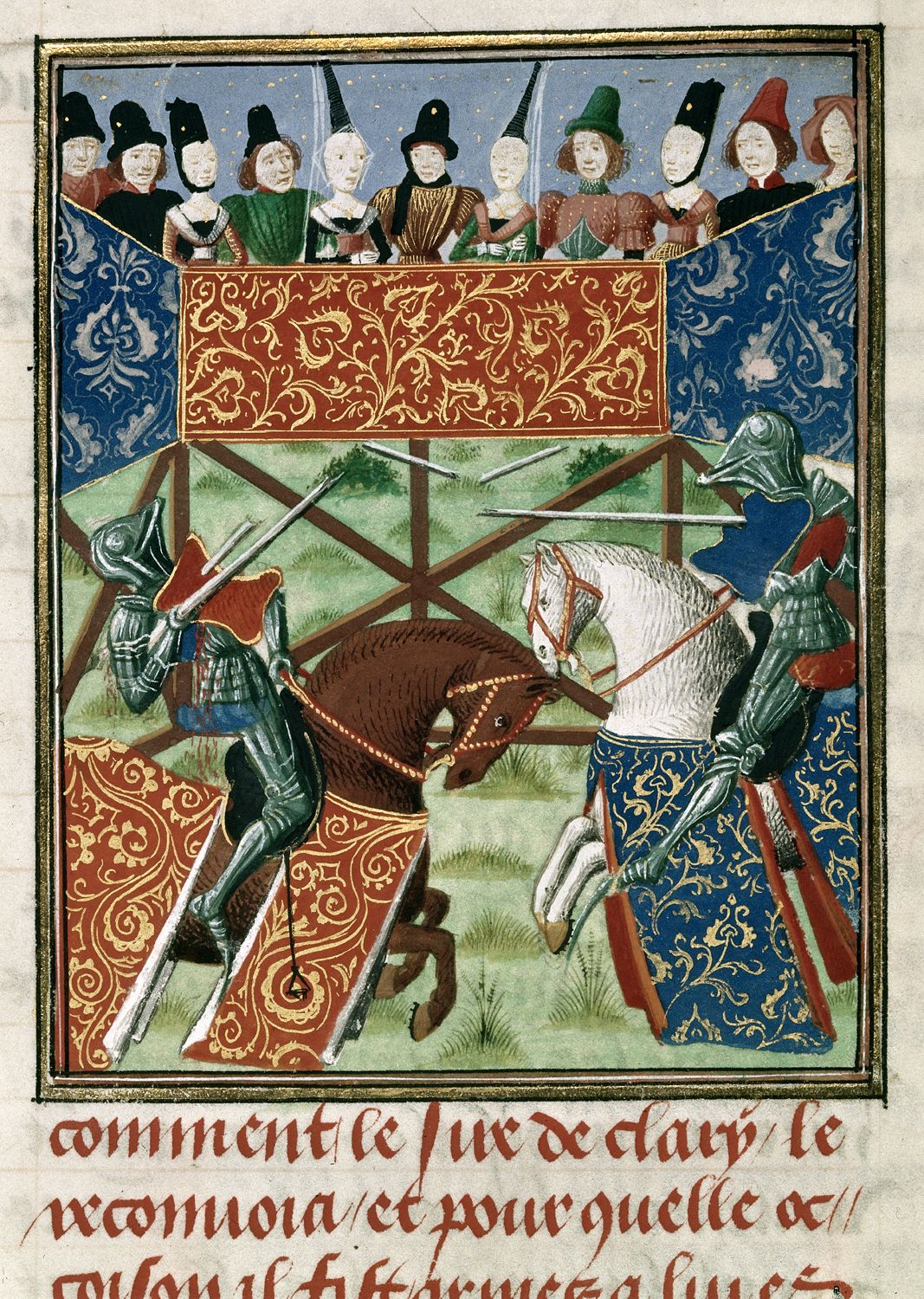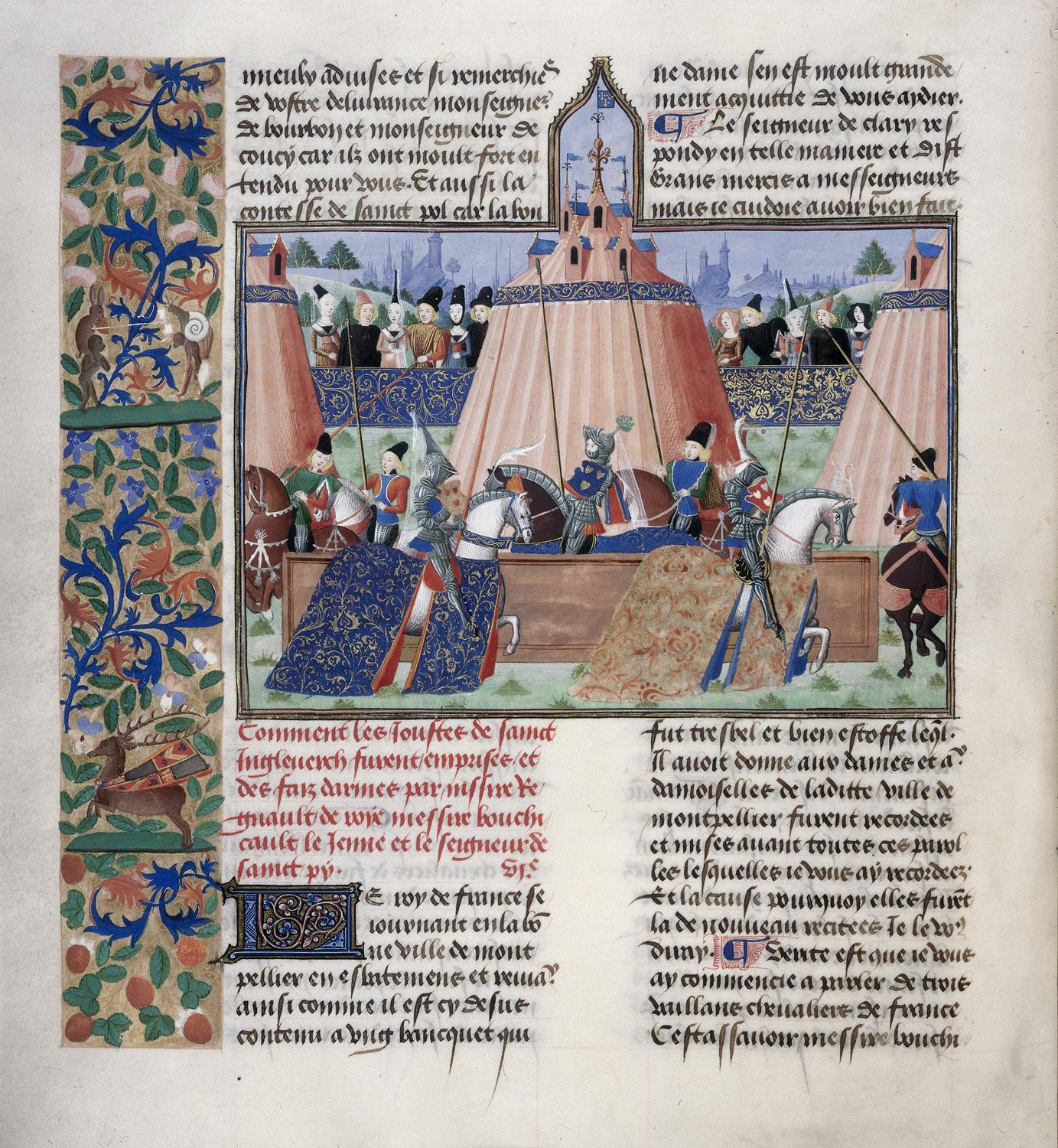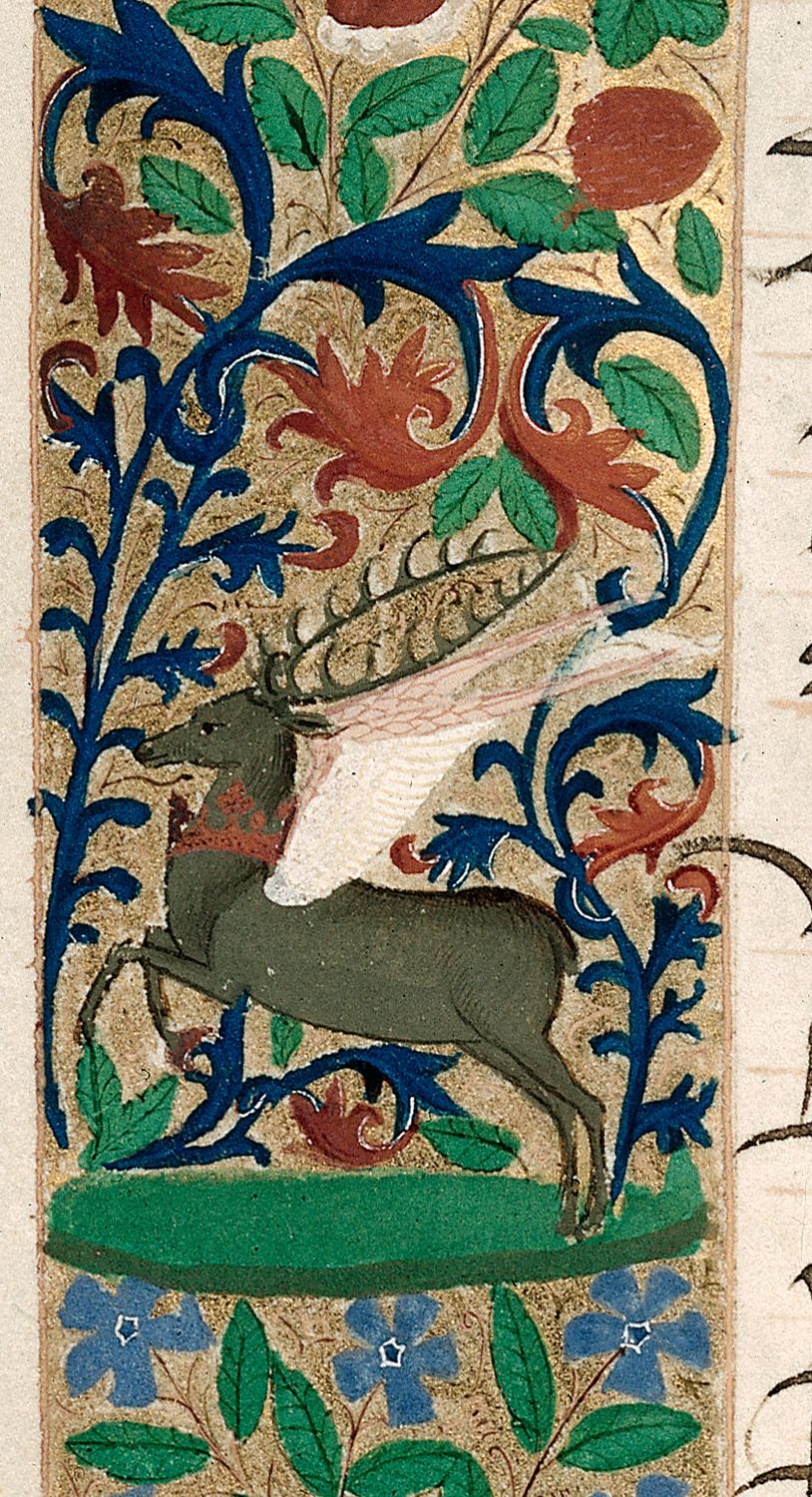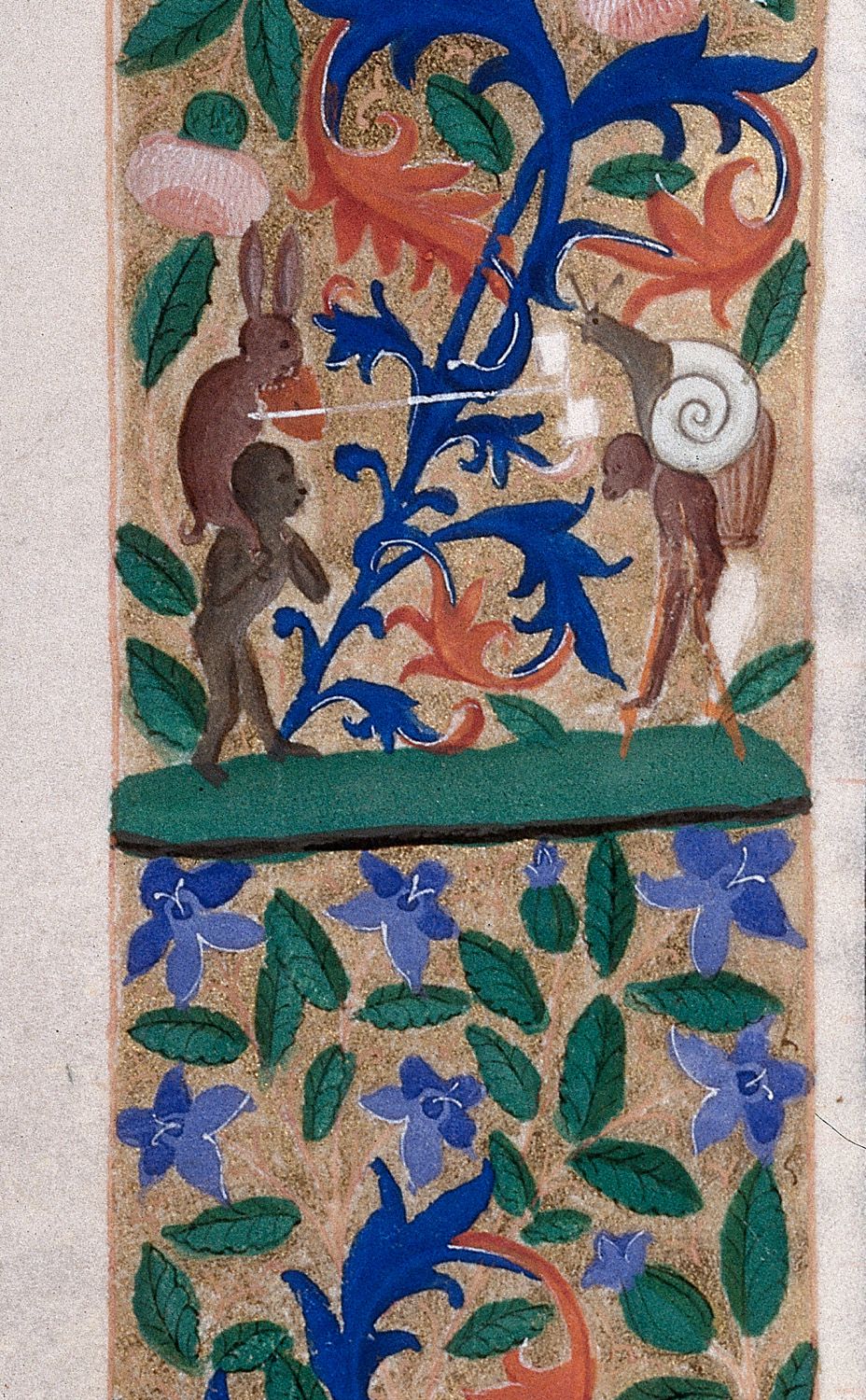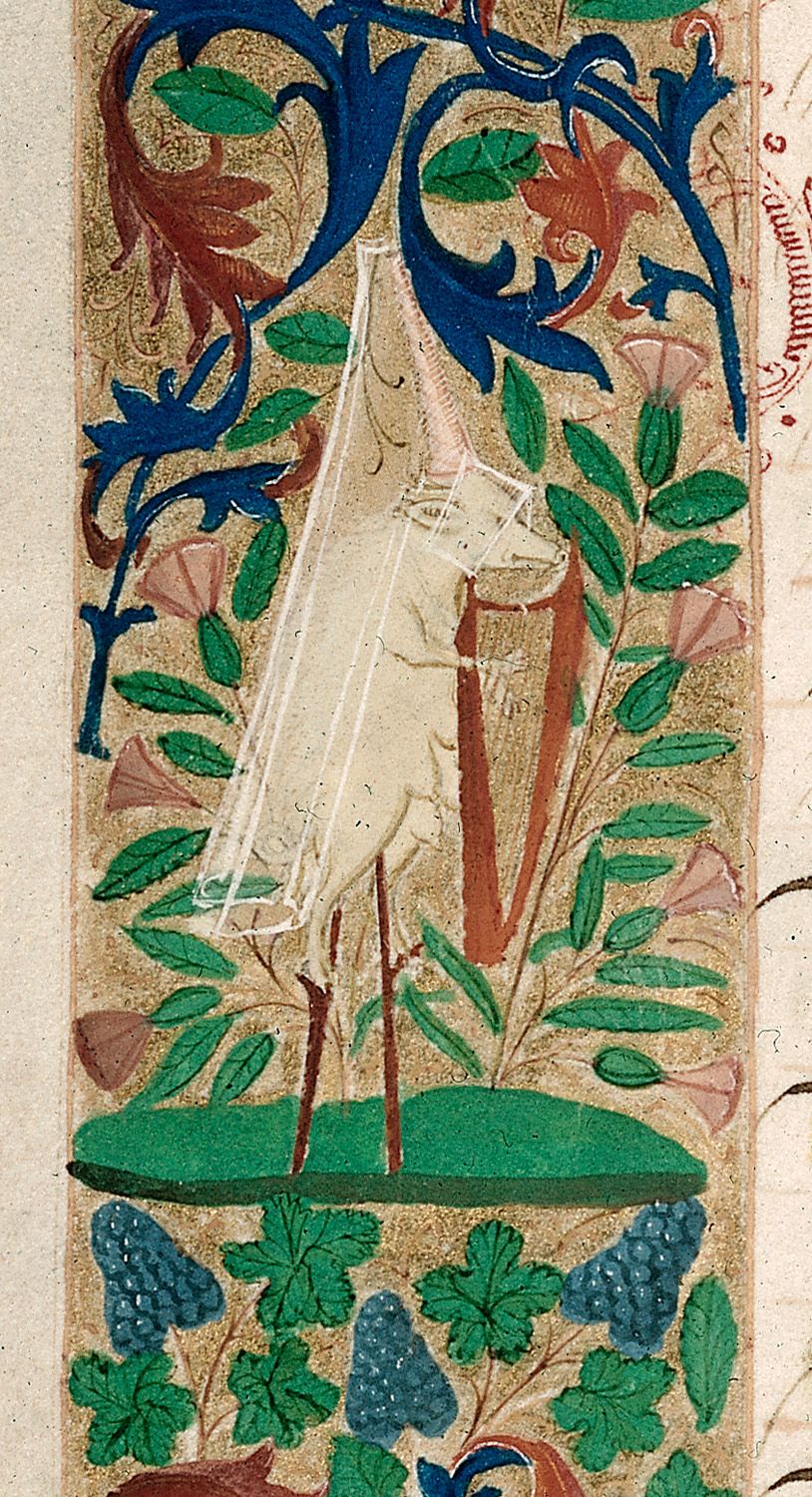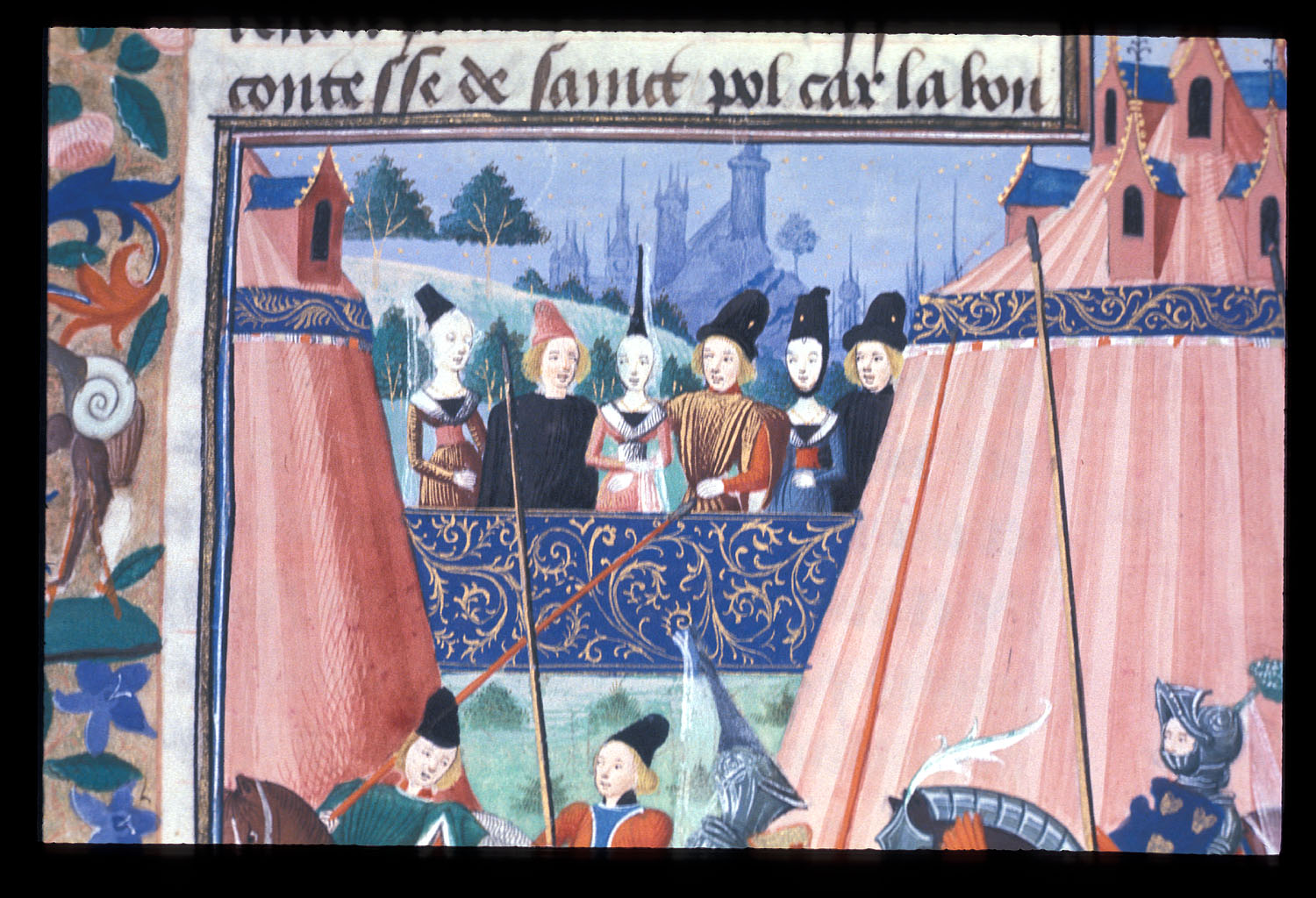Last week we learned about the deified Woden, often identified with the Old Norse god Oðinn. But not everyone agreed that Woden was divine.
No detailed account of Woden and his mythic adventures survives from early medieval England; nevertheless, this ancestral figure remains present in the cultural imagination of the English people even centuries later. The famous 8th-century ecclesiastical historian Bede is the first known Anglo-Saxon author to describe this mythic genealogy in Book I, Capitula 15 of his Historia claiming: Duces fuisse perhibentur eorum primi duo fratres Hengist et Horsa….Erant autem filii Uictgilsi, cuius pater Uitta, cuius pater Uecta, cuius pater Uoden, de cuius stirpe multarum prouinciarum regium genus originem duxit, “From the first their leaders (the Anglo-Saxons) were held to be two brothers, Hengest and Horsa….They were sons of Wictgils, whose father was Witta, whose father was Wecta, whose father was Woden.”
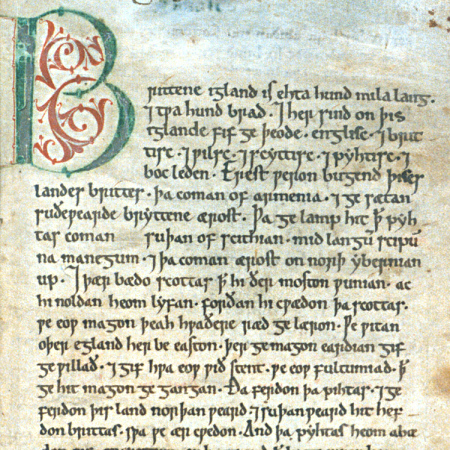
The Anglo-Saxon Chronicle, surviving in nine extant manuscripts and probably completed under King Ælfred the Great in the 9th century, reiterates Bede’s Wodinic genealogy. Almost a century later, in a Latin adaptation known as Chronicon Æthelweardi, the 10th century historian Æthelweard (descended from the 9th-century King Æthelred I, the elder brother of the King Ælfred the Great) laments Woden’s divine status within the Norse Pantheon. In his chronicle, Æthelweard complains that ignorant Scandinavian pagans have mistakenly deified Woden, whom Æthelweard identifies as king of the barbarians. He bemoans how these pagans honor Woden as a god rather than the ancestral chieftain that Æthelweard, like so many Anglo-Saxon authors, understood him to be.
Well after the Norman Conquest of 1066, Woden was still making his way into English manuscripts, especially in depictions of Anglo-Saxon royal lineages. At roughly the same time as Snorri was composing his Edda, and Geoffrey of Monmouth his Historia, Wodinic genealogy remains present in the English written record, remembering the Anglo-Saxon kings of old who trace their ancestry back to this deified chieftain.
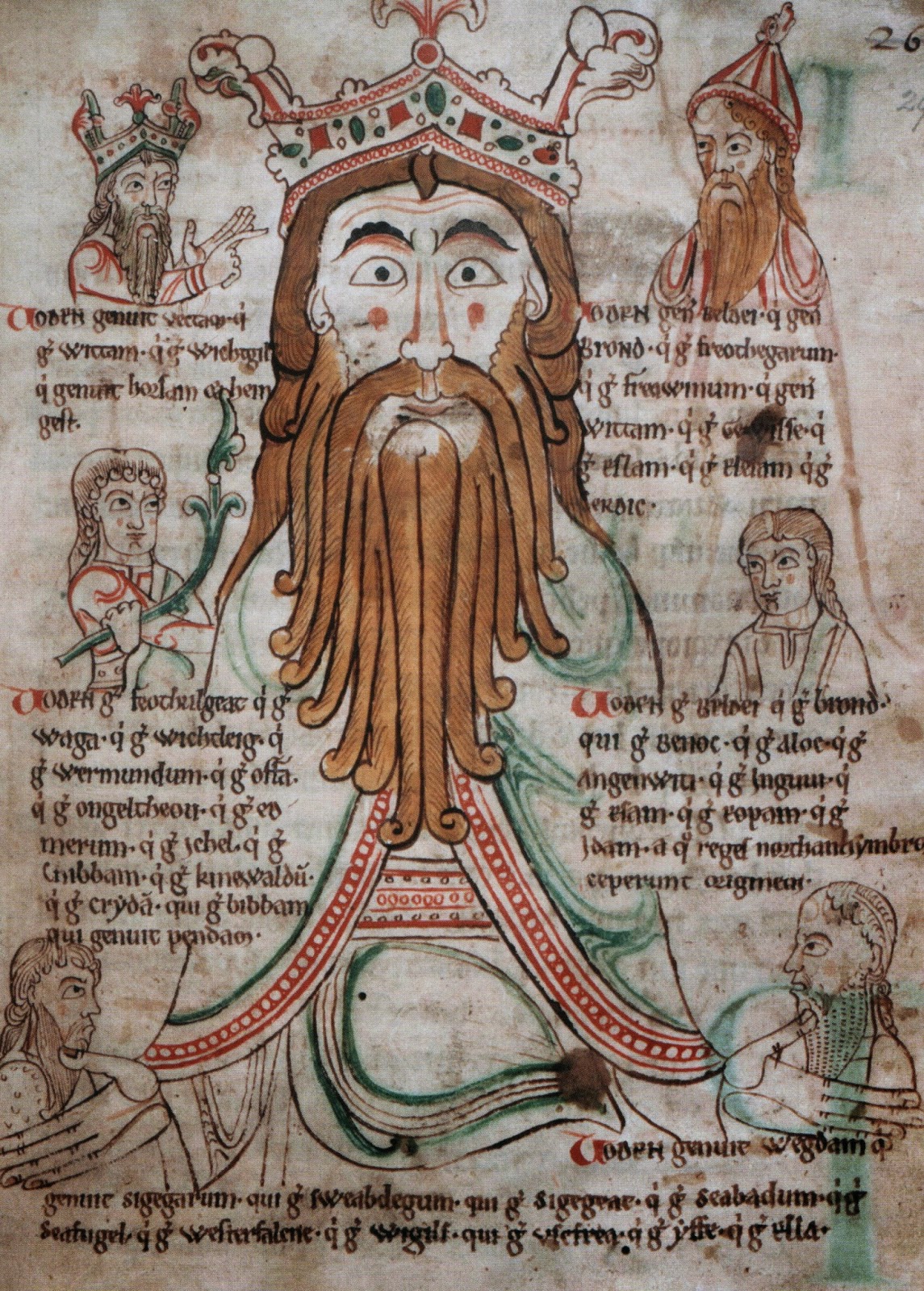
The Libellus de primo Saxonum uel Normannorum adventu—located in a 12th-century manuscript (London, British Library Cotton Caligula A. viii) and often attributed to Symeon of Durham—contains an illustration of Woden, crowned as ancestral king of the Anglo-Saxons. The text surrounding the illustration describes the royal lineages of the kingdoms of Kent, Mercia, Deira, Bernicia and Wessex respectively, each claiming descent and the right to rule from this legendary figure.
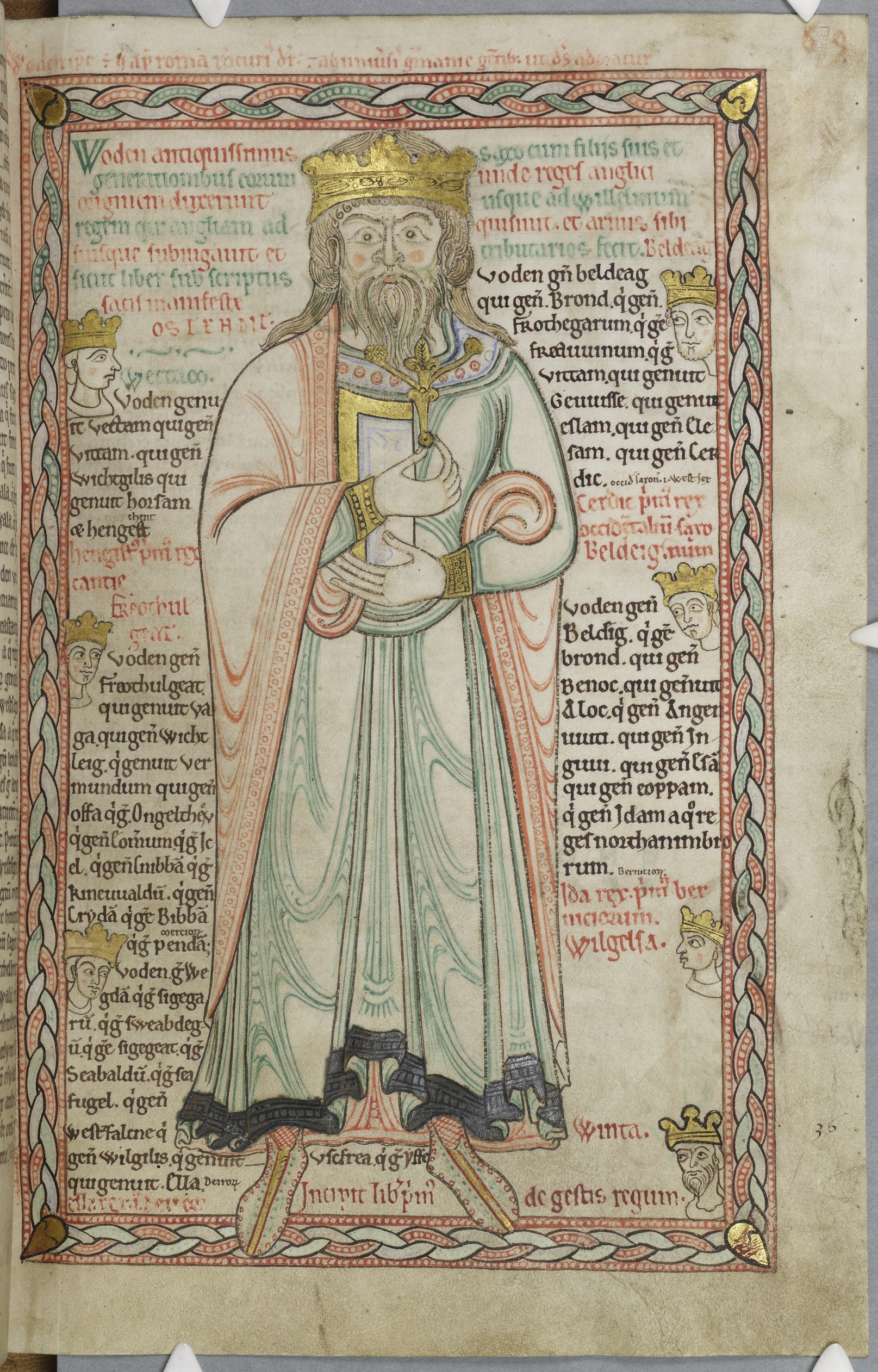
A strikingly similar image of Woden as a crowned English ancestral figure surrounded by his royal descendants accompanies the 12th-century Historia Anglorum by Henry, Archdeacon of Huntingdon (located in Cambridge Corpus Christi College MS 66). This text connects Woden with Henry II, the contemporary king of England.
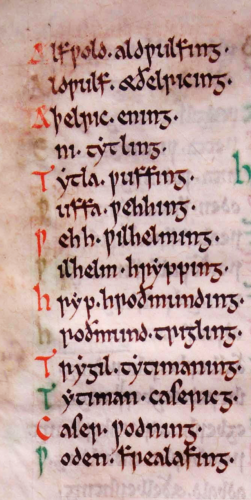
Likewise, Ernulf, Bishop of Rochester describes the kings of East Anglia as descendants of the legendary Woden in his 12th century Textus de Ecclesia Roffensi (found in Rochester Cathedral Library, MS A.3.5).
In early medieval English historiography, Woden appears to have been used to establish dynastic legitimacy for kings. Long after Woden may have been worshiped as a god, well past the Anglo-Saxon conversion and even through the Norman Conquest, the importance of this legendary figure continues to loom large in the cultural imagination of those living and ruling in medieval England. Although today nowhere near as popular or well known as Arthur, the famous king of the Britons, the earliest kings ruling in England turned to Woden, not Arthur, in order to affirm and legitimize their royal lineages.
Richard Fahey
PhD Candidate in English
University of Notre Dame
Special thanks to David Ganz, Andrew Klein and Christopher Scheirer for their contributions to this post.
Further Reading:
Meaney, A L. “Woden in England: a reconsideration of the evidence.” Folklore 77.2 (1966): 105-115.
North, Richard. Heathen gods in Old English Literature. Cambridge: Cambridge University Press, 1997.
Rowsell, Thomas. Woden and his Roles in Anglo-Saxon Royal Genealogy. Medievalists.net, 2012.
Primary Sources mentioned concerning Woden/Oðinn:
Ernulf, Bishop of Rochester. Textus Roffensis: Rochester Cathedral Library manuscript, A. 3.5.
Sturluson, Snorri. Edda. Anthony Faulkes (trans and ed). David Campbell Publishers, 1987.
Swanton, Michael, (trans and ed). The Anglo-Saxon Chronicle. Phoenix Press, 2000.

